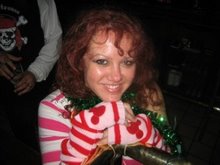Jeff Oster’s story has been a long, surprising, meandering one, with a second (or third, or fourth) act that once wouldn’t have seemed possible. Nearly 30 years ago, Oster first decided to play music for a living; 20 years ago, he set aside his musical ambitions and moved on to a more lucrative day job; and about five years ago, he finally found that his day job made it possible for him to revive those initial dreams. Oster is now releasing his second album, “True,” an artful blend of ambient grooves with his warm, jazz-inflected trumpet and flugelhorn playing. The album is the next step in a unique trip that has turned a one-time limo driver, standup comic, bar-band musician and financial planner into an unexpected force in the world of instrumental music.
Produced by Will Ackerman, the founder of Windham Hill Records, “True” features music composed and performed by Oster, Ackerman, Jan Pulsford, Patrick Gorman, and Ugandan vocalist Samite. The album was mixed by Bryan Carrigan (Alanis Morrissette, No Doubt) and the legendary engineer Bruce Swedien, whose other work includes Michael Jackson’s “Thriller.”
“There have been a million recordings of horn players, some of them utterly brilliant, but in all these recordings there has never been anyone who incorporates so many influences or blurs genres or traditions as gracefully as Jeff Oster does,” says Ackerman. “The elements are familiar, but the synthesis is unique. This is a milestone recording."
For Oster, though, the synthesis simply comes naturally. “The second record has more rhythm than the first, but none of it is really planned,” he says. “I just play what moves me, what I love, what sounds good to me. And I start by hunting for sound, more than anything else. I look for what’s out there that I can react to, build the songs from there, and figure, if I love it, maybe somebody else is going to love it.”
Raised in Florida, Oster began playing music at the age of eight. He moved to Oregon for college, made contacts in the record industry, and came to Los Angeles to visit; a six-hour audition to become Ray Charles’ trumpet player didn’t result in the gig, but it was exciting enough that he moved to L.A. to try to break into the business.
When a record deal didn’t materialize immediately, he worked as a limo driver, often playing his song demos for the captive audience in his car. (One passenger, country singer Mel Tillis, was encouraging enough to help him get into ASCAP.) He wrote songs, played in cover bands in L.A., Las Vegas and Lake Tahoe, worked the wedding circuit, and even tried his hand at standup comedy for a while. In 1987, though, a client convinced him that he’d make a good stockbroker and financial planner; the client was right, and for the last 20 years Oster has been extremely successful in the financial industry.
Oster’s musical dreams resurfaced strongly in 2003, when he began using the computer software program Sonic Acid to create music using downloaded drum, bass and synthesizer tracks. Although he’d record his horn parts from across the room using the computer’s tiny built-in voice microphone, the resulting songs sounded good enough to become favorites on the mp3.com service, where he placed four songs on the Top Ten Downloads list.
“I’d recorded these songs at three in the morning on a little 38-cent microphone,” he says, “but I was getting 40,000 downloads a month, so I knew I had something going on.”
The songs also attracted Will Ackerman, a musical idol of Oster’s since the late 1970s. The two men recorded together in late 2003, cutting tracks that became the “At Last” EP and then the full-length album “Released.” The album, which Oster has described as “Chet Baker meets Dead Can Dance,” won the 2005 Album of the Year and Best Contemporary Instrumental Album awards at the NAR Lifestyle Music Awards, which are voted by broadcasters and handed out by the New Age Reporter, the leading journal to cover New Age, World, Ambient and Electronic music. The Oster/Ackerman composition “At Last” also won the Best New Age Song award at the 2005 Independent Music Awards.
“True” features many of the same contributors as “Released,” with more emphasis on the rhythm tracks and on sounds from around the world, including Tibetan throat chants on “Tibet” and a spoken/sung interlude from Samite on “Serengeti.” Musicians include drummer Keith Carlock, bassists T-Bone Wolk and Michael Manring, cellist Eugene Friesen, keyboardists Philip Aaberg and Jan Pulsford, guitarists Patrick Gorman and Ackerman, percussionist Derrik Jordan, and vocalists Noah Wilding and Melissa R. Kaplan. “It might sound like hyperbole, but we may be witnessing the emergence of the next instrumental superstar,” wrote Bill Binkelman in an advance review in the New Age Reporter.
For Jeff Oster, though, superstardom was never the point. His goal, he came to realize after the years of driving limos and playing in bar bands and working as a financial advisor, is simply to play what he wants, to find music he loves and pass it on to anybody who wants to listen.
“Over the years, I never had any idea of what kind of music I would make on my own,” he says. “At first I was either trying to play other people’s music, or I was trying to write music that other people would record. And I never really thought about what my music would be like. I never said, ‘I’m gonna be an ambient chilled jazz flugelhorn player.’ But because I have enough financial resources now, I’m not trying to sound like whatever’s selling now. I‘m just going for stuff that sounds good and makes me feel good. And that’s an incredibly freeing way to work.”
Monday, October 22, 2007
Subscribe to:
Post Comments (Atom)





No comments:
Post a Comment